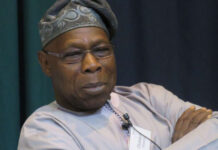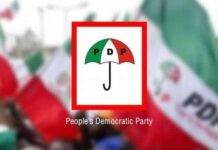The Nigerian Naira experienced a mixed trading day yesterday as it appreciated in the parallel market while facing depreciation in the Nigerian Autonomous Foreign Exchange Market (NAFEM).
The Naira rose to N1,580 per dollar in the parallel market, a significant improvement from N1,610 per dollar at the end of last week. However, in NAFEM, the currency depreciated slightly to N1,611.4 per dollar from N1,609.29 over the weekend.
The appreciation of the Naira in the parallel market has been attributed to a variety of factors. Many currency traders have pointed to increased supply of foreign currency from private sources and remittances from abroad as contributors to the Naira’s strengthening.
This improvement provides some relief to Nigerians who rely on the parallel market for foreign exchange transactions, as it often offers quicker access compared to official channels.
The parallel market, commonly referred to as the “black market,” operates outside the official banking system and is often used by individuals and businesses unable to meet their foreign exchange needs through official means.
Although the government and the Central Bank of Nigeria (CBN) have taken steps to curb reliance on this market, it remains a significant part of the country’s foreign exchange landscape.
In contrast to the parallel market, the Naira experienced depreciation in the official market. Data from FMDQ, a financial markets data provider, showed that the indicative exchange rate for NAFEM increased to N1,611.4 per dollar, marking a N2.11 depreciation from the previous rate of N1,609.29 per dollar. This depreciation highlights the challenges facing Nigeria’s official foreign exchange market.
One key issue in the official market is the rising demand for foreign currency, which has not been matched by supply. The volume of dollars traded in NAFEM rose by 6.3% to $179.34 million from $168.63 million the previous weekend. This increased turnover indicates robust demand for dollars among businesses and individuals seeking to meet international payment obligations.
The divergence between the parallel market and NAFEM rates has resulted in a widened margin of N31.4 per dollar, compared to a narrow 71 kobo per dollar gap last week Friday. This widening margin reflects the persistent disparity between official and unofficial market rates, which can pose challenges for economic stability.
Economists and market analysts have expressed concern about the implications of this disparity. The gap between market rates can lead to speculative activities, as traders attempt to profit from the differences. Moreover, it can also impact inflation, as imported goods and services become more expensive when purchased through official channels at higher rates.
The ongoing fluctuations in the Naira’s value underscore the complexities of managing Nigeria’s foreign exchange market. The Central Bank of Nigeria (CBN) has implemented various measures to stabilize the currency, including restrictions on certain imports and interventions in the foreign exchange market. However, balancing demand and supply remains a challenging task.
Some experts advocate for more comprehensive reforms to address the underlying issues in the foreign exchange market. These may include improving access to foreign exchange for legitimate businesses, enhancing transparency in the allocation of foreign currency, and addressing structural issues that contribute to the high demand for dollars.
The Naira’s performance in both the parallel and official markets is a reflection of Nigeria’s broader economic challenges. The country relies heavily on oil exports for foreign exchange earnings, making it vulnerable to fluctuations in global oil prices. Diversifying the economy and boosting non-oil exports could help reduce the pressure on the Naira and improve foreign exchange availability.
While the appreciation of the Naira in the parallel market offers a glimmer of hope for individuals and businesses, the depreciation in the official market highlights the ongoing challenges in Nigeria’s foreign exchange landscape.
Addressing these challenges will require a multifaceted approach, involving both short-term measures and long-term structural reforms to ensure a stable and sustainable foreign exchange market.




